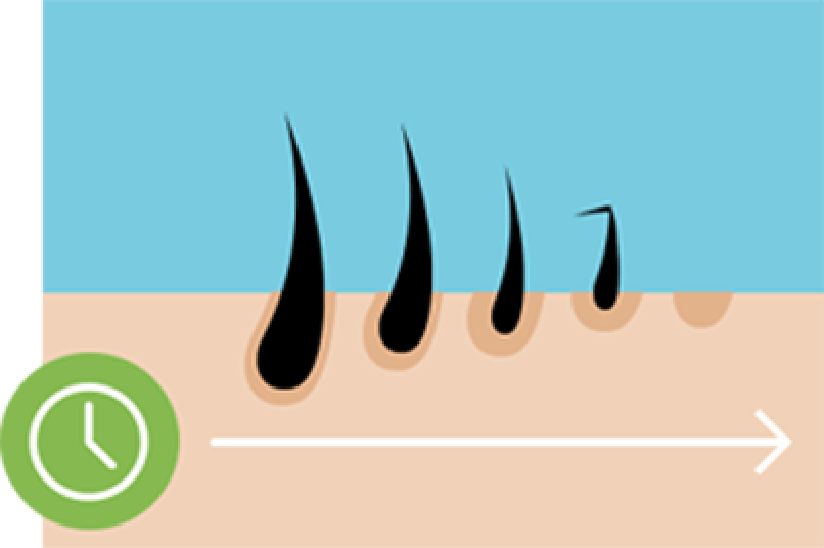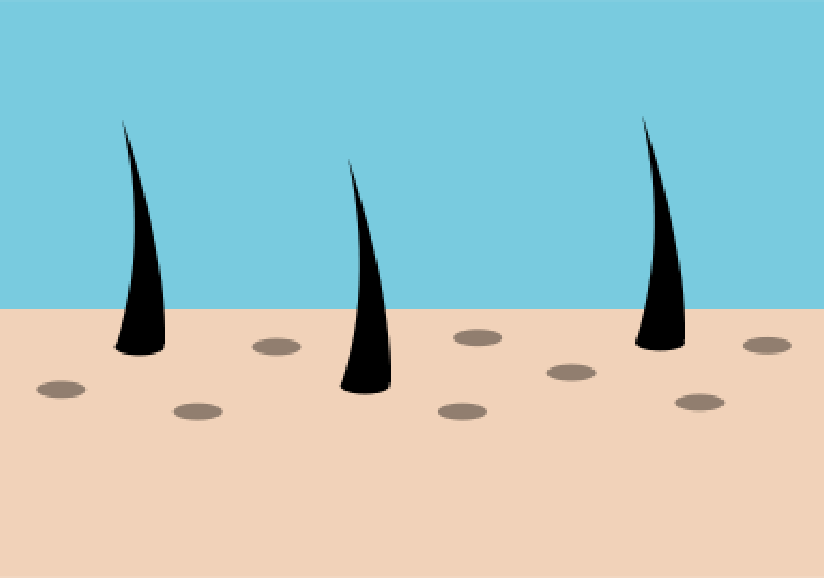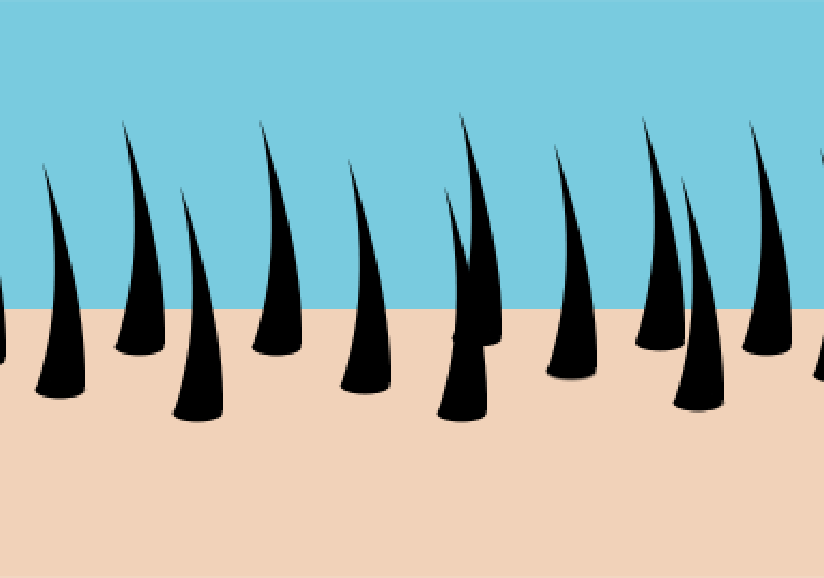Your Shopping Bag is Currently Empty
Please LOGIN to view items you may have added using another computer or device.
Discovering that your hair is becoming thin or sparse can be difficult for any woman. While female hair loss is incredibly common, a changing hairline or new bald spot can knock your confidence.
About one in three women1 will experience some form of hair loss throughout their lives, with the vast majority caused by female pattern baldness. This gradual thinning of the hair goes hand in hand with ageing, much like the equivalent male pattern balding. However, there are other types of hair loss in women, too, that can be affected by genetic, hormonal and lifestyle factors.
If you’ve noticed thinner hair than usual, it’s important to try and identify which type of hair loss you’re experiencing so that you can create an effective treatment plan. We’re here to help you feel informed and in control, so read on to learn about the symptoms, causes and effective treatments available for hair loss in women.
What is considered a normal amount of hair loss per day for females? The average scalp is covered with 100,000 hair follicles. While most people lose between 50-100 hairs a day, a consistent loss of 150 hairs or more a day is considered significant hair loss, also known as alopecia.
For women experiencing female pattern baldness, hair loss is usually noticed first with a gradual thinning at the part line and at the crown. For other types of alopecia, however, hair loss may present as random bald spots, sudden extreme shedding, or a receding hairline.
For women experiencing female pattern baldness, hair loss is usually noticed first with a gradual thinning at the part line and at the crown. For other types of alopecia, however, hair loss may present as random bald spots, sudden extreme shedding, or a receding hairline.
There are some other clues that may suggest more hair loss than usual, too:
While acute hair loss can be triggered by illness or stress, the more common female pattern baldness is usually gradual. Female pattern hair loss can start just about any point in a women’s life, and thinning can peak around the time of menopause.
There are many types of alopecia that can affect women, but androgenic alopecia, also known as female pattern hair loss or female pattern baldness, is the most common. In fact, as many two thirds of postmenopausal women1 suffer from thinning hair or bald spots.
A combination of hereditary hair loss factors, hormone activity, and lifestyle habits all affect the hair’s growth cycle and can cause a gradual shrinking of hair follicles. This means that, if left untreated, female pattern hair loss and other types of alopecia can cause the hair to become increasingly sparse or bald.

Genetics can have a big influence on hair loss, and you can inherit the thinning hair gene from either your mother or father (or both). While hereditary hair loss is the leading cause of thinning hair in women, early intervention can be incredibly effective to help regrow hair before it becomes too thin.
The hair growth cycle is very influenced by hormonal fluctuations, so taking the pill, having a baby or going through menopause can contribute to either gradual or sudden hair loss in women.
Female pattern hair loss is often the most noticeable during menopause, and this is because the female hormones estrogen and progesterone naturally decline at this time2.
After pregnancy, however, some women will notice a much more sudden shedding. This is due to a rapid change in hormones, pushing more of the hair than usual into the telogen (shedding) phase2. Known as telogen effluvium, this non-hereditary type of alopecia is usually only temporary.
Hair thinning can be very gradual, so it's no wonder that age is a factor affecting female pattern baldness. The effect of genetics and hormones on your hair follicles will increase over time, meaning that hair loss is often more noticeable in older women.

While female pattern hair loss is generally not an indication of underlying health issues3, there are other types of alopecia that can be linked to stress or illness. These include alopecia areata (an autoimmune disorder that can cause patchy baldness on the scalp or body) and anagen effluvium (when toxic substances prevent hair from growing like hair loss caused by chemotherapy).
Even periods of high emotional stress can lead to losing more hair than usual, but it’s important to check with your doctor to make sure that there’s nothing more serious going on.
While there are many hair loss solutions for women, such as trying a new hair style or haircut, there are also over the counter hair loss treatments available to help regrow thinning hair. Minoxidil, the active ingredient in ROGAINE®, is an effective treatment for female pattern hair loss in women. It reactivates the hair follicles on your scalp so you can regrow thicker, fuller hair.

ROGAINE® is an FDA- approved topical treatment. Twice-daily application with the Women’s ROGAINE® 2% Minoxidil Solution or once-daily application of the Women’s ROGAINE® 5% Minoxidil Unscented Foam, clinically proven to boost hair regrowth. In fact, clinical studies showed that more than 80% of women increased their hair count after using ROGAINE®*.
Treat thinning hair at the earliest signs with Women’s ROGAINE® hair regrowth products. Explore the range of ROGAINE® products for women, and boost your follicles for thicker, fuller hair with this clinically-proven treatment.
Yes, menopause can cause hair loss or hair thinning in women2. The drop in the female hormone estrogen can make female pattern hair loss worse5 or can even trigger a temporary hair loss known as telogen effluvium6.
The female hair cycle is affected by hormones, meaning that oral contraceptive pills have the potential to cause hair loss4. This can be caused by a general susceptibility to the hormones in birth control, by worsening the effects of female pattern hair loss, or by triggering a temporary hair loss event known as telogen effluvium.
Certain prescription medications7 can have the unwanted side effect of hair loss in women. These include certain acne medications, birth control pills, hormone treatments, antidepressants, blood thinners, immunosuppressants, steroids, thyroid medications and chemotherapy drugs. If you’re concerned that your hair loss is caused by medication, talk to your doctor.
While it’s possible for young women to experience female pattern baldness, it is not as common as in older women. Instead, hair loss in young women can be caused by stress, thyroid or autoimmune disorders, hormonal fluctuations, trichotillomania, or tension alopecia caused by tight hairstyles. If you’re worried about your hair loss, it’s worth talking to a doctor.
Yes, stress can trigger or worsen hair loss in women. Both acute stress (such as grief or an illness) and chronic stress can impact hair shedding. The types of hair loss caused or worsened by stress are telogen effluvium, alopecia areata and trichotillomania.
*In a 6-month placebo-controlled clinical study